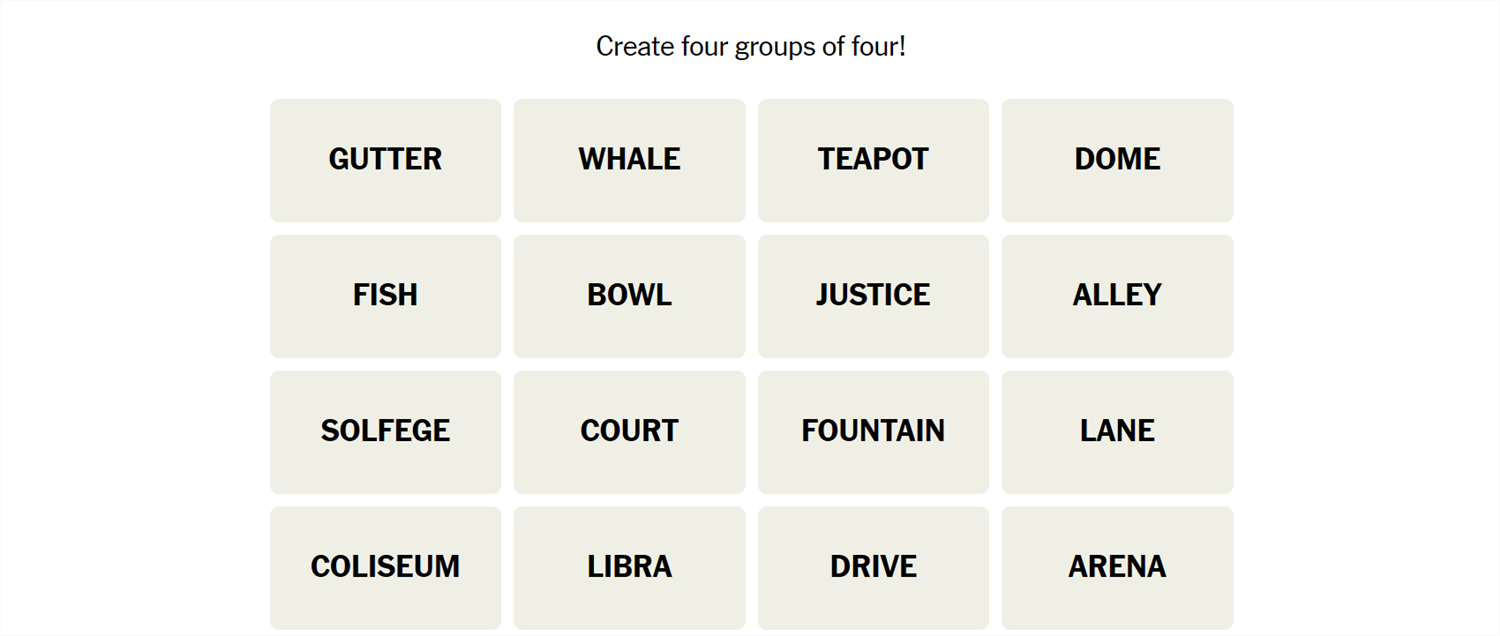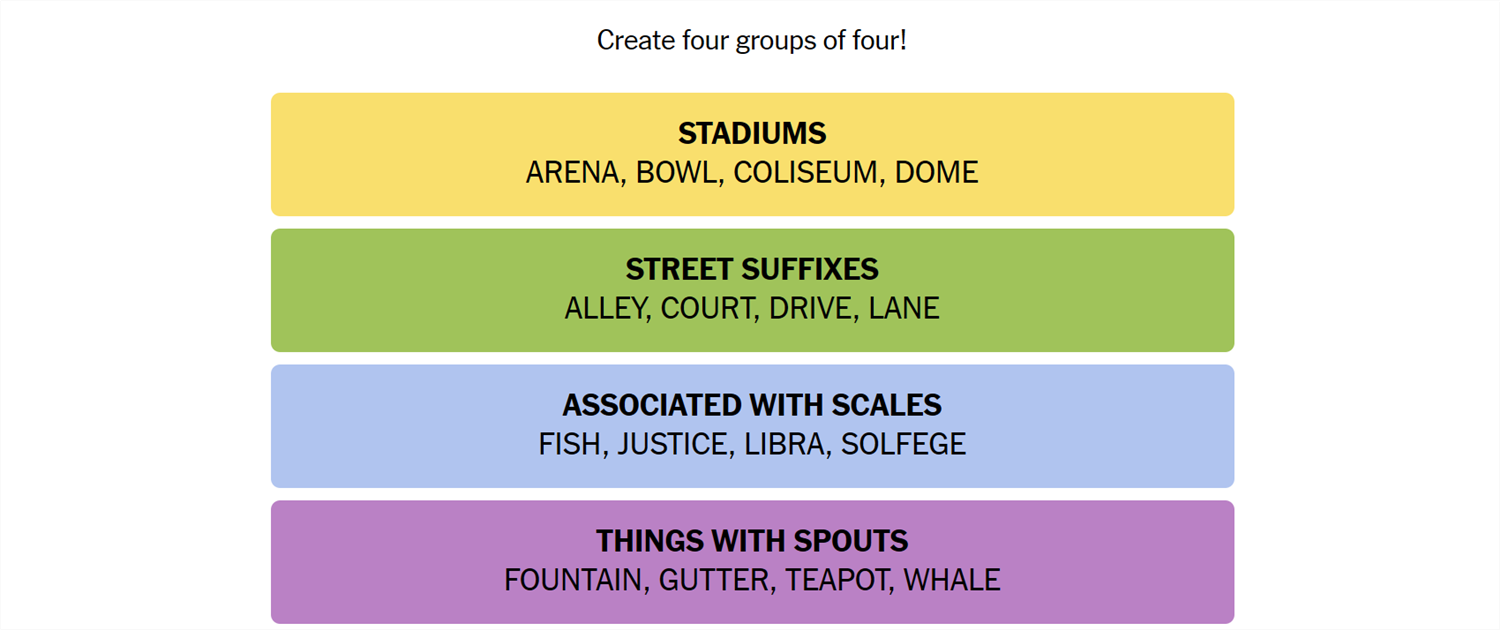Connections is a game from the New York Times that challenges you to find the association between words. It sounds easy, but it isn’t—Connections categories can be almost anything, and they’re usually quite specific. If you need a hand getting the answers, we’ve got you covered.
What Is Connections?
Connections is a game from the New York Times. The objective is simple: sort 16 words into groups of 4. Each group of words will be connected by some common idea or theme. That common element could be anything. We have seen everything from games that rely on the number of letters in the words to categories that require you to spot an extra letter at the end of the word. Sometimes they’re references to economics, other times they reference fairy tales. There is no telling what sort of association there will be between words.
Once you’re confident you understand the connection, select 4 words, then hit “Submit.” You have only four attempts in total, so don’t be too guess-happy.
Hints for Today’s Connections Groups
Here are a few hints for the 414th Connections game to get you started:
- Yellow: Where sports might be played.
- Green: Similar to boulevard or road.
- Blue: Reptiles are also associated with this word.
- Purple: Water comes out.
If you still need help, the actual group names are:
- Yellow: Basic Directions
- Green: Advocate For
- Blue: Drawback
- Purple: Instrument Homophones
Today’s NYT Connections Answers
Stadiums (Yellow):
Arena, Bowl, Coliseum, Dome
Street Suffixes (Green):
Alley, Court, Drive, Lane
Associated with Scales (Blue):
Fish, Justice, Libra, Solfege
Things with Spouts (Purple):
Fountain, Gutter, Teapot, Whale
How Did We Solve This Connections Game?
July 29th was definitely one of the harder Connections games in the last week or so.
The first word I started with was coliseum—it made me think of a gigantic sporting arena. From there, bowl, arena, and dome were pretty much the only other words that could match that idea. They were all in the Yellow group, which was “Stadiums.”
I shuffled a few times, then alley, court, drive, and lane all landed right in a row, which made their connection apparent: they’re words for a street, much like boulevard, avenue, or road. The Green group was “Street Suffixes.”
I shuffled a few more times without much success, until I eventually realized that the connection between teapot and whale is they both have a spout. With spout in mind, fountain and gutter were the only possible words that might go into whatever group this was. Fountain, gutter, teapot, and whale are all “Things with Spouts,” which was Purple.
That left fish, justice, libra, and solfege in Blue. Try as I might, I couldn’t think of what could possibly tie these words together, so I just selected them to see. The answer was “Associated with Scales.” The real difficulty came in connecting the multiple types of scales, and I certainly wouldn’t have gotten there in a timely fashion. Fish have physical scales, justice has ethical scales, libra is an astrological sign represented by a physical scale, and solfege is a way of practicing musical scales. That was a tough one for Blue.
How Do You Guess Connections Groups?
There is no quick, reliable way to approach Connections like there is with Wordle, since Connections isn’t algorithmic. However, there are a few things to keep in mind that can help.
- Look for similar parts of speech. Are some words verbs and others nouns? Are some adjectives? Try mentally grouping them based on those categories and see if any other patterns jump out at you.
- Are the words synonyms? Sometimes categories will just be synonyms for a phrase, or very close to synonyms. Don’t rely too closely on this, though. Occasionally, Connections will deliberately throw in words that are sometimes synonyms to mislead you.
- Try saying the words. Sometimes, saying the words helps. One puzzle we saw included the words go, rate, faster, clip, pace, speed, move, commute, and hurry—all of which are obviously related to the idea of motion. However, when you say them, it becomes a little more obvious that only four (go, move, hurry, faster) are things you’d actually say to prompt someone to get moving.
- Expect the red herring. Connections usually has words that could be plausibly, yet incorrectly, grouped together. Take the words Bud, Corona, and Light, as an example. You might instinctively see those three words together and assume they’re lumped together in a category related to beer—but they weren’t.
- Look for distinct words. If a word on your board doesn’t have multiple meanings or can really only be used in one context, try using that word as the basis for a category.
- Shuffle the board. Sometimes, moving words around will help you look at them in new ways.
If you didn’t solve this one, don’t feel too bad—there’s always tomorrow! And those words may align with a topic you’re interested in, giving you a leg up on the competition.






